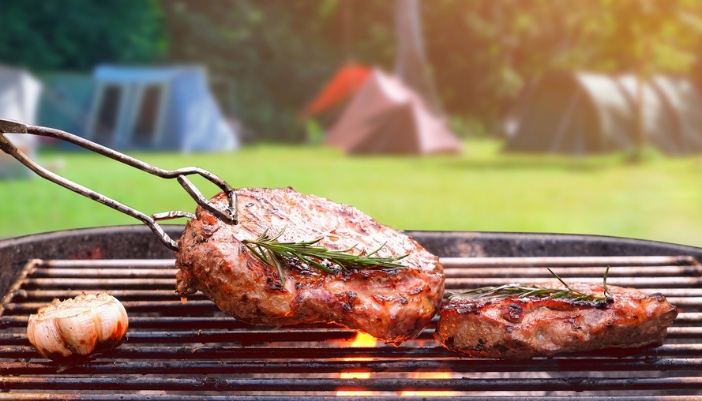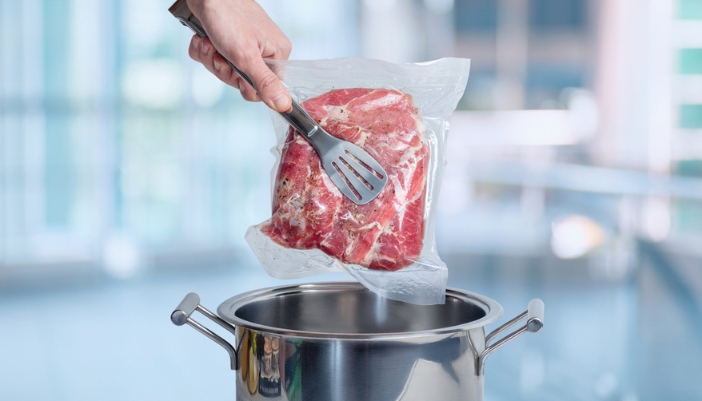Burnt on the outside, raw in the middle—filet mignon has ended more than a few steak nights in disappointment. It's one of the most tender cuts out there, but it’s also one of the easiest to mess up. That's why so many people reserve it for special occasions or, more often, leave it to the pros.
But here's the thing: with the right method and a little know-how, filet mignon can be a total win at home. And there's no better time to give it a shot than on National Filet Mignon Day when this buttery cut finally gets the spotlight it deserves.
Not sure where to start? The experts at Nelthorpe & Son Appliance Center are always here to help you choose the tools and techniques that match your style—and help you avoid steak night regret.

Grill It Right: Heat, Sear, Rest
Filet mignon on the grill sounds simple enough—toss it on and let the flames do the work. But this cut cooks fast, and with so little fat, it can go from perfect to dry in the time it takes to find your tongs. Getting it right means using the heat to your advantage, not just blasting it and hoping for the best.
Grilling gives filet a bold, smoky edge and that satisfying crust, but it takes a little finesse.
- Use two heat zones: high heat for the sear and medium heat to finish gently without overcooking.
- Preheat the grill fully. The steak should sizzle the second it hits the grates.
- Oil the steak, not the grill, to help prevent flare-ups and get even browning.
- Cook to 130°F for medium rare, then let it rest at least five minutes.
- Flip just once. More flipping = less crust and more lost juices.
Ideal Method For: Backyard cooks, weeknight steak lovers, and anyone who wants fast flavor without dragging out extra gear. Great for warm evenings or feeding a group.

Sous Vide It: Precision Made Easy
Filet mignon isn't a forgiving cut. It doesn't have the fat to hide your mistakes, and one extra minute on the heat can undo everything. That's why sous vide is a game-changer—it cooks the steak to an exact temperature, all the way through, with zero guesswork.
The meat gently cooks in a water bath, keeping it tender, juicy, and evenly pink from edge to edge. It's low-effort, high-reward, and nearly impossible to mess up.
- Set the temperature to 130°F for a perfect medium rare finish.
- Seal the filet in a vacuum bag—or a zip-top bag using the water displacement method.
- Let it cook for 1 to 3 hours. Timing is flexible, so there's no rush.
- Pat it dry and sear in a hot pan or grill—just 30 to 60 seconds per side to build that crust.
- The crust matters. That quick sear adds depth, texture, and authentic steakhouse flavor.
Ideal Method For: Control freaks, planners, and anyone who wants a flawless steak without last-minute scrambling. Great for special dinners or hosting without stress.

Cast Iron Magic: The Perfect Sear
If you've got a cast iron skillet hiding in a cabinet, now's the time to put it to work. Filet mignon cooks beautifully in cast iron thanks to its even heat and serious searing power. No grill, no gadgets—just high heat and good timing.
This method gives you a deep, golden crust while keeping the center tender and juicy. It's simple, reliable, and perfect for indoor steak nights.
- Get the skillet screaming hot before the steak goes in—wait until it just starts to smoke.
- Pat the steak dry and use a high-smoke-point oil like avocado or canola.
- Sear for about 2 minutes per side, then finish in a 400°F oven if needed for thicker cuts.
- Don't move the steak around—let it build a proper crust.
- Let it rest after cooking so the juices stay locked in.
Ideal Method For: Apartment dwellers, cold-weather cooks, and anyone who loves a crisp sear and total control on the stovetop. Great for cozy nights or cooking just for two.
Choosing Your Method
Not sure which way to go? Start by asking yourself a few simple questions. The right method isn't about being fancy—it's about what works best for you and your kitchen.
- Do I want to be hands-on or hands-off? If you like watching every step and hearing that satisfying sizzle, go with cast iron or the grill. If you'd rather let the steak do its thing while you do yours, sous vide is your friend.
- Am I cooking for a crowd or just two? Grilling makes it easier to cook multiple steaks at once. Cast iron or sous vide are great for smaller, more intimate meals.
- How confident am I with timing? Sous vide takes the pressure off—no need to hit the perfect moment. Grill and cast iron need a little more focus, but they give you more of that hands-on steak night feel.
- Do I want a fast dinner, or do I have time to plan? Cast iron and grilling are quicker, but sous vide gives you total control with a little more lead time.
When you've answered these, you'll know exactly which tool to use—and you won't have to second-guess your filet.

Method Matters—So Do the Sides
If you're already cooking filet, you might as well make it a whole thing—and National Filet Mignon Day is the perfect excuse. Instead of stressing over sides or reaching for a boxed mix, match what's on your plate with your method.
- Firing up the grill? Toss on thick-cut zucchini, bell peppers, or even halved romaine for a quick charred salad. Grilled corn or baked potatoes also hold their own next to a smoky, flame-seared filet.
- Going sous vide? You can sous vide more than just steak. Try carrots with a bit of butter and thyme or baby potatoes with garlic—they cook alongside your filet with the same precision. Then finish them in a hot pan for texture.
- Using cast iron? Take advantage of that hot oven or stovetop. Sauté mushrooms in the same skillet after the steak rests, or roast broccolini or asparagus while the filet finishes in the oven. Add a simple pan sauce with the leftover drippings, and you've suddenly leveled up.
Let the cooking method shape the whole meal. It keeps things simple, feels intentional, and makes that steak taste even better. No restaurant needed.
A Steak Worth Getting Right
No one wants to spend good money on a great cut to overcook it. Whether you're going for a grill session, a sous vide setup, or a sizzling cast iron sear, the method matters—but so does having the right appliance to back you up.
Got questions about temps, timing, or which tools make the most sense for your kitchen? Stop by and talk with the experts at Nelthorpe & Son Appliance Center. We'll help you get set up for steak night success—and show you our full selection of appliances built to handle filet and just about everything else.